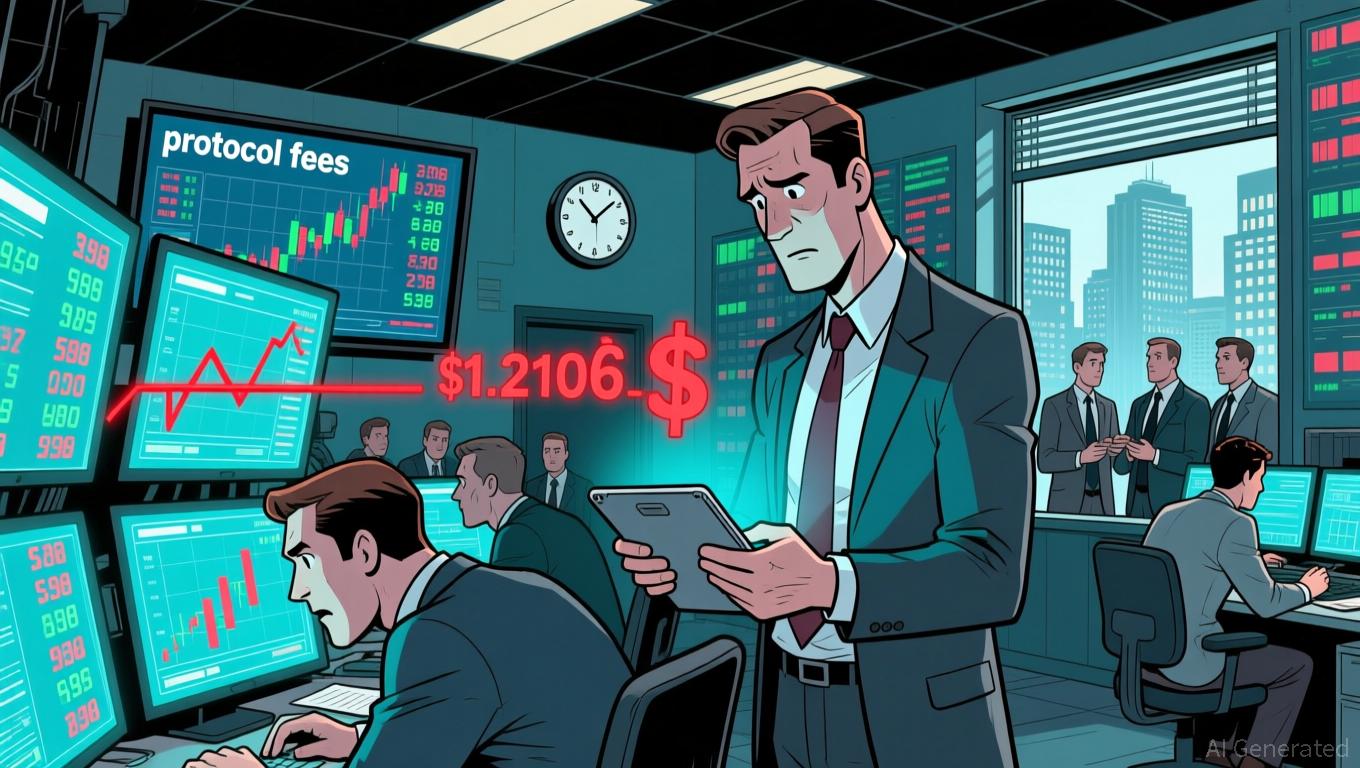AAVE experiences a 14.6% decline over 7 days as large investors make moves and short positions are rebalanced
- AAVE fell 14.6% in 7 days amid whale activity, including a $561M ETH withdrawal from Aave to Binance. - BitMEX co-founder Arthur Hayes sold $4.96M in crypto assets, including 1,630 AAVE tokens, reflecting broader portfolio adjustments. - Whale short positions and leveraged trades highlight risks in DeFi markets, with $125M paper losses and $7M floating profits exposing high-stakes strategies.
As of NOV 16 2025,
Notable on-chain transactions have brought renewed focus to the
BitMEX co-founder Arthur Hayes has also been making moves in the market, selling digital assets worth $4.96 million in the last 24 hours. His sales included 1,630 AAVE tokens, amounting to $289,000. Hayes’ recent transactions span Ethereum-based assets, governance tokens, and DeFi-related coins, indicating a diversified portfolio management strategy. Although the market has remained relatively steady, analysts suggest that such sizable trades could temporarily impact liquidity and price volatility, particularly for tokens with lower trading volumes.
These whale maneuvers and large-scale trades are happening alongside major adjustments in short positions on leading crypto derivatives platforms. One whale is holding a 15x leveraged ETH short valued at $26 million, currently showing a $7 million unrealized gain, and is also managing a 5x leveraged ZEC short with a $20 million unrealized loss. These activities demonstrate the intricate risk and reward strategies employed by institutional traders, who often juggle multiple leveraged positions across various assets.
Backtest Hypothesis
The recent volatility and whale activity underscore the need for strong risk controls and thorough backtesting in DeFi and crypto trading. One suggested backtest is to pinpoint all days since 2022-01-01 when AAVE dropped by 10% or more, then analyze how prices behaved afterward. This requires a complete daily closing price or return dataset for AAVE during this timeframe to accurately identify these significant down days. Once these dates are determined, the backtest can review subsequent price movements and recovery trends to assess whether past –10% declines led to similar or different outcomes. Such analysis may reveal behavioral trends and help traders develop more effective risk management strategies.
Disclaimer: The content of this article solely reflects the author's opinion and does not represent the platform in any capacity. This article is not intended to serve as a reference for making investment decisions.
You may also like
DASH surges 30.39% over the past week amid strategic growth moves and positive analyst revisions
- DoorDash's DASH stock fell 10.59% in 24 hours but surged 30.39% in 7 days, driven by a strategic Old Navy partnership expanding retail delivery services. - Acquisitions of Deliveroo and autonomous delivery partnerships with Coco Robotics, plus $10.72B revenue and 49.2% gross margin, strengthened market leadership. - Analysts raised price targets to $260 with "Outperform" ratings, citing growth potential despite a high 98.1 P/E ratio reflecting market optimism. - Technical analysis shows bullish reversal
Aster News Today: Optimism Faces Prudence: ASTER Approaches $1.21 Following RSI CEO's 16% Stake Sale
- Aster (ASTER) rose 8% toward $1.21 as Binance-backed DEX hit $3T in cumulative trading volume. - RSI CEO sold 16% stake ($11M+), raising doubts despite Q2 revenue growth (19.7%) and EPS beat. - ASTER faces mixed signals: bullish triangle pattern vs. declining fees, 50% open interest drop, and stagnant adoption. - Analysts remain divided: RSI's 22% YTD gain contrasts with ASTER's uncertain breakout potential amid waning trader enthusiasm.

The ChainOpera AI Token Crash: An Urgent Warning for Cryptocurrency Projects Powered by AI
- ChainOpera AI's COAI token collapsed 96% in late 2025, exposing systemic risks in AI-driven DeFi ecosystems. - Centralized governance (10 wallets controlled 87.9% supply) and misaligned incentives exacerbated panic selling during crises. - Technical flaws included untested AI models with 270% increased vulnerabilities and inadequate smart contract security audits. - Regulatory shifts like the GENIUS Act compounded liquidity challenges, highlighting the need for compliance-ready AI crypto projects. - Inve

How large a portion of the AI data center surge will rely on renewable energy sources?